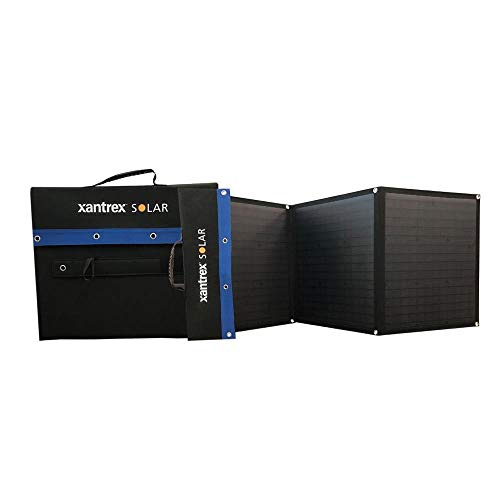nyyankees588
Member
- Joined
- Dec 18, 2017
- Messages
- 11
- Reaction score
- 0
[font=Tahoma, sans-serif]Hi there - I have now been living full-time out of my van for the past month. When I installed my electrical system, all appeared to be well and good, however a few significant issues have appeared over the past couple of weeks that I am trying to diagnose. My guess is that they are all related, but the possible problems are many and my electrical knowledge is relatively limited. Any input would be greatly appreciated - I've provided as much detail as possible below and will provide additional info that may be needed.[/font]
[font=Tahoma, sans-serif] [/font]
[font=Tahoma, sans-serif]Problems[/font][font=Tahoma, sans-serif] (specs of components are all listed in section below):[/font]
[font=Tahoma, sans-serif]- Fridge triggers inverter fault: I made a DIY residential freezer to fridge conversion and unless the batteries are at full charge and either currently receiving current from the solar panel or van (via an isolator), the fridge triggers the inverter to fault when it turns on. The fault error code is for under voltage from the batteries OR poor battery condition. I fridge pulls 135 watts when it first turns on and a steady 60 watts once it is on and the compressor is running. When I originally got the fridge and tested it plugged in to a house, the overall energy usage was very small – between 20-30 amp/hours per day. My best guess is that despite this low overall usage, it pulls too much power for my battery system to handle for the very brief amount of time that it is turned on. [/font]
[font=Tahoma, sans-serif]- Batteries hold charge erratically: At this point I keep the fridge turned off and only turn it on to cool when the van is on (so that the batteries are receiving full power from via the isolator and can handle the fridge). When I originally had the fridge hooked into the system, the batteries would experience wild swings in charge level when the fridge turned on/off (I monitored the % and voltage via my charge controller). With the fridge turned off however, I have noticed that the batteries continue to experience wild swings in charge. For example, last night they went from 100% charge to 5% charge (according to my charge controller) after having my interior lights on for ~1hr (they draw very minimal energy). When charging 2 laptops through the inverter (drawing 60 watts total), the batteries have also dropped charge almost immediately (when I unhook the laptops they shoot back up to ~80% charge).I have owned the batteries for under 2 months, but I am wondering if they are shot (possibly as a result of being used with the fridge that overdrew them?).[/font]
[font=Tahoma, sans-serif] [/font]
[font=Tahoma, sans-serif]Electrical setup/components:[/font]
Solar: 275 Watt Residential Panel
Batteries: 2x 6v Trojan T-105 (setup in 12v system, 225amp/hr total power capacity)
Isolator: Keyline 140amp Smart Isolator
Inverter: Xantrex ProWatt 1000W Pure Sinewave
Charge Controller: Renogy 20amp Rover
Fridge: 2.1 cu ft chest freezer converted to chest fridge via STC-1000 temperature controller (when fridge hits set temperature, controller triggers fridge to turn on until it reaches set temp, at which point it cuts power to fridge).
Lights: Acegood RV/Boat recessed lights x8
[font=Tahoma, sans-serif] [/font]
[font=Tahoma, sans-serif]Problems[/font][font=Tahoma, sans-serif] (specs of components are all listed in section below):[/font]
[font=Tahoma, sans-serif]- Fridge triggers inverter fault: I made a DIY residential freezer to fridge conversion and unless the batteries are at full charge and either currently receiving current from the solar panel or van (via an isolator), the fridge triggers the inverter to fault when it turns on. The fault error code is for under voltage from the batteries OR poor battery condition. I fridge pulls 135 watts when it first turns on and a steady 60 watts once it is on and the compressor is running. When I originally got the fridge and tested it plugged in to a house, the overall energy usage was very small – between 20-30 amp/hours per day. My best guess is that despite this low overall usage, it pulls too much power for my battery system to handle for the very brief amount of time that it is turned on. [/font]
[font=Tahoma, sans-serif]- Batteries hold charge erratically: At this point I keep the fridge turned off and only turn it on to cool when the van is on (so that the batteries are receiving full power from via the isolator and can handle the fridge). When I originally had the fridge hooked into the system, the batteries would experience wild swings in charge level when the fridge turned on/off (I monitored the % and voltage via my charge controller). With the fridge turned off however, I have noticed that the batteries continue to experience wild swings in charge. For example, last night they went from 100% charge to 5% charge (according to my charge controller) after having my interior lights on for ~1hr (they draw very minimal energy). When charging 2 laptops through the inverter (drawing 60 watts total), the batteries have also dropped charge almost immediately (when I unhook the laptops they shoot back up to ~80% charge).I have owned the batteries for under 2 months, but I am wondering if they are shot (possibly as a result of being used with the fridge that overdrew them?).[/font]
[font=Tahoma, sans-serif] [/font]
[font=Tahoma, sans-serif]Electrical setup/components:[/font]
Solar: 275 Watt Residential Panel
Batteries: 2x 6v Trojan T-105 (setup in 12v system, 225amp/hr total power capacity)
Isolator: Keyline 140amp Smart Isolator
Inverter: Xantrex ProWatt 1000W Pure Sinewave
Charge Controller: Renogy 20amp Rover
Fridge: 2.1 cu ft chest freezer converted to chest fridge via STC-1000 temperature controller (when fridge hits set temperature, controller triggers fridge to turn on until it reaches set temp, at which point it cuts power to fridge).
Lights: Acegood RV/Boat recessed lights x8




























































